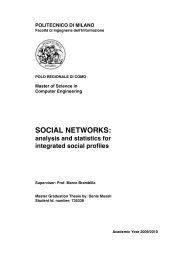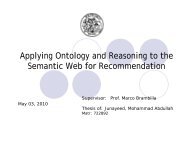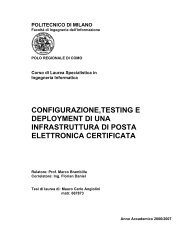Thesis full text (PDF) - Politecnico di Milano
Thesis full text (PDF) - Politecnico di Milano
Thesis full text (PDF) - Politecnico di Milano
You also want an ePaper? Increase the reach of your titles
YUMPU automatically turns print PDFs into web optimized ePapers that Google loves.
classifications, recommendation, transitivity of relations, and static and multi-valued<br />
attributes.<br />
• The available data retrieval mechanisms usually require design-time specification of the<br />
content structure, thus failing to deliver objects when the relations among them are not<br />
known a priori.<br />
These drawbacks become more and more critical in several Web information systems that<br />
require awareness of both system data and its semantics specially in the social network web<br />
applications where reasoning on the user profile as well as other information which could help to<br />
identify common interests among users.<br />
In summary, the application must be integrated with the data semantics and inference mechanism<br />
by which can deduct some interesting information in applications that involve content<br />
personalization, adaptively, recommendation and machine-to-machine sharing. All these<br />
information systems need to make decisions upon knowledge that is derived mainly from their<br />
data and its semantics.<br />
To fulfill such requirements, tra<strong>di</strong>tional modeling approaches for Web applications must be<br />
extended from a purely database oriented or object oriented perspective, to a <strong>full</strong>-fledged<br />
semantics based and ontology based perspective. This involves dramatic changes from static and<br />
syntax-based models to dynamic and semantics-based knowledge.<br />
1.2 Overview of the Approach<br />
To overcome the impuissance of Web applications, new effective and efficient tools are needed<br />
so that application designers move to knowledge-intensive application development, without<br />
losing development productivity and results quality.<br />
We are using a framework [1] for designing and implementing a Web application with<br />
recommendation lineament that leverage data semantics for achieving the abovementioned<br />
results. More precisely, we address three main objectives:<br />
6


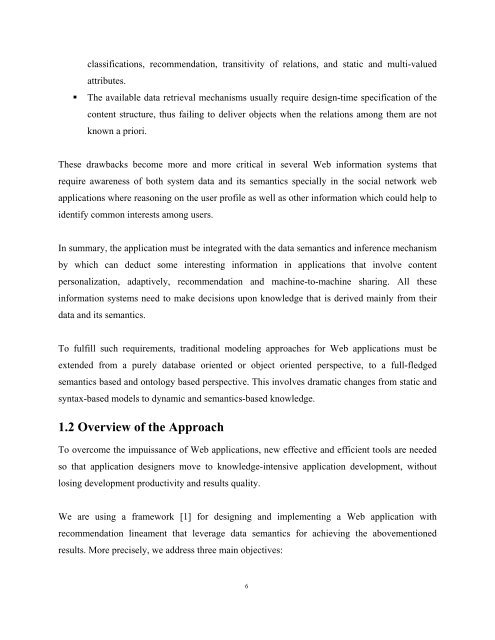
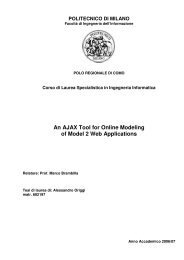
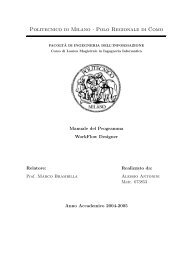
![Full text preview of the chapter [PDF] - Politecnico di Milano](https://img.yumpu.com/44021924/1/180x260/full-text-preview-of-the-chapter-pdf-politecnico-di-milano.jpg?quality=85)
